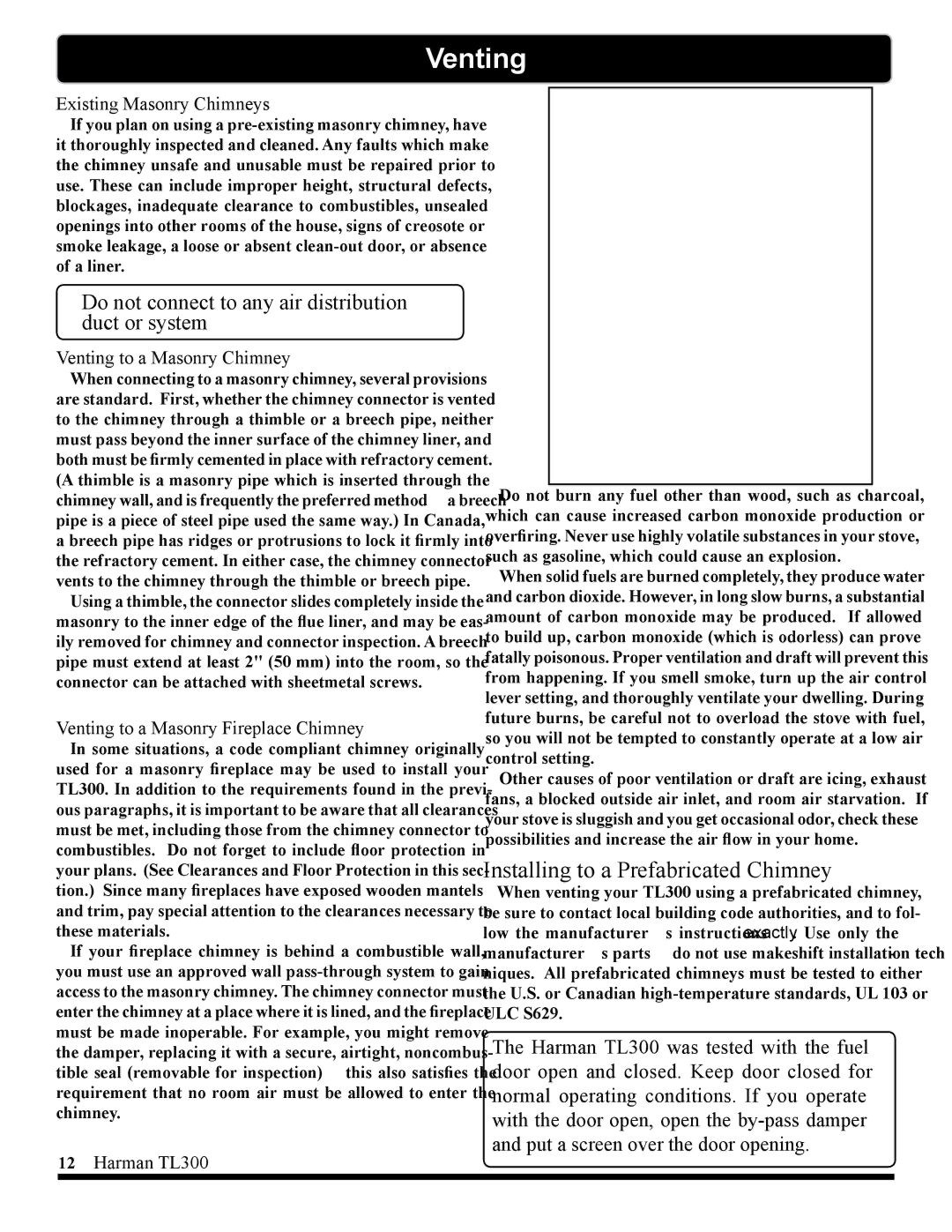TL300 specifications
The Harman Stove Company TL300 is a standout choice for homeowners seeking an efficient and reliable home heating solution. This pellet stove is designed to deliver exceptional warmth and coziness with minimal environmental impact, making it a popular option among both first-time buyers and seasoned users.One of the defining features of the TL300 is its high-efficiency design. With a thermal efficiency rating of over 85%, this stove maximizes heat output while minimizing fuel consumption. This efficiency not only translates into lower heating bills but also reduces the frequency of pellet replenishment, allowing for longer periods of uninterrupted warmth.
Equipped with Harman's patented Smart Control technology, the TL300 takes user convenience to the next level. This advanced system offers precise temperature control, allowing users to set and maintain their desired heating levels with remarkable accuracy. The user-friendly interface is intuitive, making it easy for anyone to operate. Additionally, Smart Control enables the integration of Wi-Fi capabilities, allowing homeowners to control the stove remotely via smartphone or tablet, ensuring that a warm and inviting atmosphere greets them upon return home.
The TL300's construction reflects Harman's commitment to quality. Built from durable materials, the stove is designed to withstand the rigors of regular use while maintaining an aesthetically pleasing appearance. The large glass viewing window not only provides a warm ambiance with its glowing flames but also enhances the visual appeal of any room.
Another notable characteristic of the TL300 is its environmentally friendly approach. The stove produces significantly lower emissions compared to traditional wood-burning stoves, making it an eco-conscious choice for modern living. Harman has also incorporated a self-cleaning feature, reducing maintenance efforts and keeping the unit running efficiently.
The TL300 is versatile, suitable for a variety of home sizes and layouts. With adjustable blower settings, users can customize the heat distribution according to their space's specific needs. Whether you want to heat a cozy living room or a more spacious area, the TL300 can adapt to your requirements.
In conclusion, the Harman Stove Company TL300 combines elegance, efficiency, and advanced technology to deliver an outstanding heating solution. With its high-efficiency performance, smart control capabilities, durable construction, and environmental benefits, this pellet stove is a smart addition to any home, ensuring comfort and warmth during the colder months.

